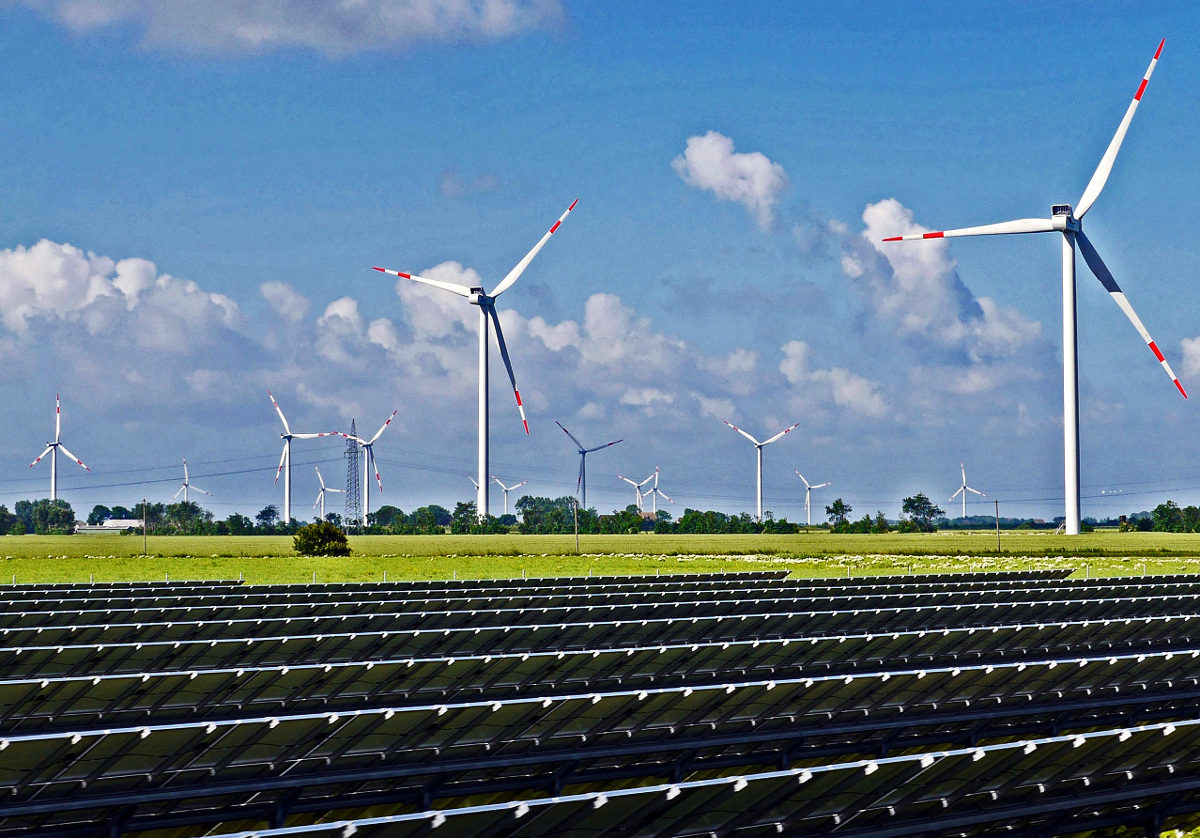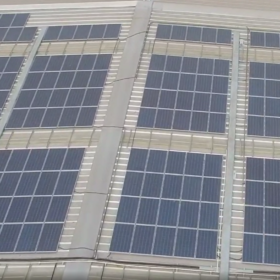A new study by U.S.-based researchers has suggested India must aim at least 30% higher than its 450 GW-by-2030 renewable energy target.
The report found 600 GW of solar and wind generation capacity–45% of the total generation mix–could keep Indian power-sector emissions at their 2018 level at a cost comparable to a fossil fuel-dominated grid whilst almost doubling electricity supply.
In carbon-mitigation and customer price terms, the most cost-effective approaches would entail a broad balance of solar and wind power or a power mix concentrated more on the latter, found the study.
Scenarios
The University of California’s Ranjit Deshmukh and Duncan Callaway; and Amol Phadke, from Lawrence Berkeley National Laboratory, studied various energy demand and cost scenarios, operational strategies, and battery storage investments along with differing clean energy mixes, weather patterns, and energy infrastructure networks. The results of the study, published in the Proceedings of the National Academy of Sciences, indicated renewables would not completely obviate the need for fossil-fuel generation but would better position the nation to exploit clean power.
The researchers modeled the electricity and carbon mitigation costs of reliably operating India’s grid in 2030 in line with achieving renewables capacity of 200 GW, 400 GW and 600 GW to determine the optimal manner of keeping those costs down. The lowest carbon mitigation costs were found to be associated with energy systems in which solar supplied 25-50% of the renewable energy supply in most cases.
The emphasis on wind was explained by Deshmukh, who pointed to its higher capacity factor–the proportion of maximum generation potential likely to actually be delivered–and the high winds observed in the country during monsoon season. The fact wind power, unlike solar, is also available in the hours of darkness would mean grid operators could shutter coal plants during monsoons in a way that is not possible with solar, stated the study.
Wind
“Wind-dominated, or balanced wind and solar, targets are more economical and require fewer coal and gas plants,” said Deshmukh, who suggested the emphasis on solar power in India should shift to wind.
India is currently placing more faith in solar, which supplies 100 GW of the nation’s 160 GW variable-clean-power generation capacity target for next year and 350 GW of the 440 GW ambition stated for 2030. However, that apparent imbalance may also reflect the higher capacity factor offered by wind power facilities. Non-hydro renewables currently make up 90 GW of India’s 380 GW power generation capacity.
Weather patterns and peak electricity profiles, however, would ensure India will need to keep building fossil fuel power plants, stated the report, probably coal and natural gas facilities.
Storage
Whilst battery storage can even out the supply of solar and wind power, the authors of the U.S. study pointed out: “Battery storage holds promise only if [its] costs fall to an average low of $150/kWh [INR10,900] and if variable RE [renewable energy] penetration is high (600 GW). Variable RE cost declines and coal energy cost growth, both of which are likely, could, together, result in costs similar to a fossil fuel-dominated system, even with 600 GW of variable RE.” That would ensure, as costs fall, battery storage could cost-effectively avert the need for new fossil fuel power plants.
The researchers created 15 solar and wind renewable energy scenarios encompassing the three generation capacity targets reached using all solar; 75% solar; an even split with wind, 25% solar and all wind. The optimal sites for each power source were modeled up to a maximum of 15% of the total generation capacity per state. India’s solar auction price results were used to estimate the levelized cost of energy from the clean power facilities.
Deshmukh emphasized the economics of renewables must be competitive against the likes of coal, stating: “Most of these countries have low historical carbon emissions compared to more industrialized countries. So, the approach we take is that if renewable energy makes economic sense, then those countries should deploy more of it.”
This content is protected by copyright and may not be reused. If you want to cooperate with us and would like to reuse some of our content, please contact: editors@pv-magazine.com.









2 comments
By submitting this form you agree to pv magazine using your data for the purposes of publishing your comment.
Your personal data will only be disclosed or otherwise transmitted to third parties for the purposes of spam filtering or if this is necessary for technical maintenance of the website. Any other transfer to third parties will not take place unless this is justified on the basis of applicable data protection regulations or if pv magazine is legally obliged to do so.
You may revoke this consent at any time with effect for the future, in which case your personal data will be deleted immediately. Otherwise, your data will be deleted if pv magazine has processed your request or the purpose of data storage is fulfilled.
Further information on data privacy can be found in our Data Protection Policy.